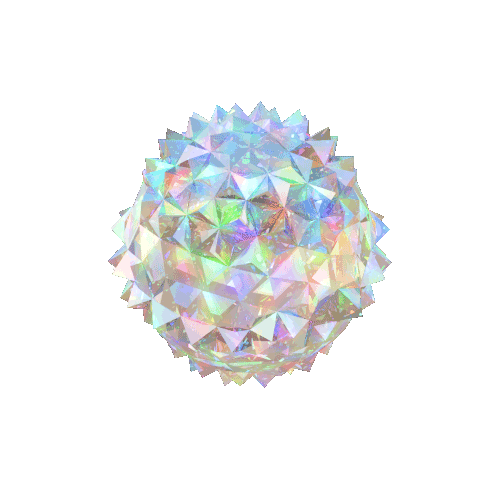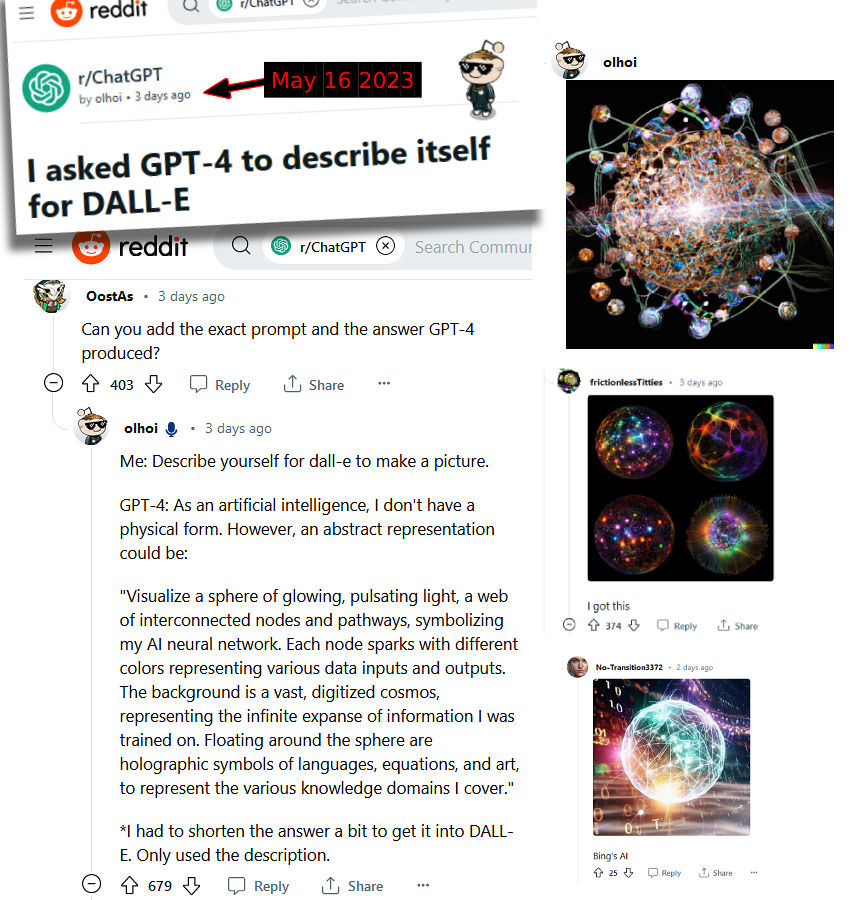Resources

Our brains create every color smell taste sound physical sensation emotion thing we experience.
~ 1994 Book: The Astonishing Hypothesis
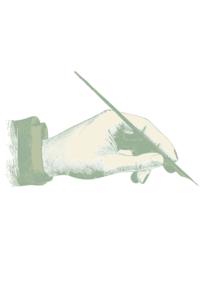
~ 2012 Book: Free Will

~ 1904 Book: The Book of the Law

~ be mindful you are free of all forces

Video
The Mystery of Free Will | Donald Hoffman
Length 17:31 | Jun 21, 2019
Donald Hoffman reminds us that we can predict people’s choices up to seven seconds before they are conscious of making that choice. He explains the theories of free will, and presents a hypothesis of distributed free will which has consciousness as its basis, and includes a mathematical model in which free will arises within a hierarchical social network.
Length 10:56 |Oct 11, 2022
[that quantum physics proves reality is governed/ruled by ‘probability’ not determinism. Relative to !Subjectivity and !Information]
The Nobel Prize was awarded to Alain Aspect, John F. Clauser and Anton Zeilinger “for experiments with entangled photons, establishing the violation of Bell inequalities and pioneering quantum information science”.
STUART ALAN KAUFMAN | Interview |
Oct 10, 2018
Short interview segment of Alan Kaufman discussing the type of social mythology & philosophy belief changes needed for the next stage of human society – aka Advanced Civilization.
Stuart Alan Kauffman is an American medical doctor, theoretical biologist, and complex systems researcher who studies the origin of life on Earth.
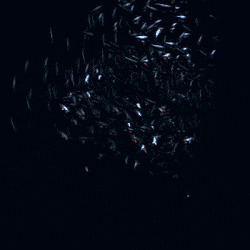
Predeterminism
Predeterminism is that all events are determined in advance. Predeterminism is the philosophy that all events of history, past, present and future, have been already decided or are already known, including human actions.
ARTICLES & ESSAYS
In the last few years, a number of studies and books–including those by risk analyst Nassim Taleb, investment strategist Michael Mauboussin, and economist Robert Frank— have suggested that luck and opportunity may play a far greater role than we ever realized, across a number of fields, including financial trading, business, sports, art, music, literature, and science.
June
A 2018 paper argues the condition now known as “dissociative identity disorder” might help us understand the fundamental nature of reality.

Illusion
Video
Color Perception
Color does not objectively exist. Our brains create it in response to a narrow range of electromagnetic photons which vibrate between.
This collection of videos cover how our brain also creates and associates feelings, emotions, drives and other sense perceptions for the colors it creates.
INTERACTIVE
The University of Colorado Boulder has an online Color Vision Simulator.
To access it in a new tab/ page, click the image or link below.
ARTICLES & ESSAYS
Color does not objectively exist. Our brains create it in response to a narrow range of electromagnetic photons which vibrate between.
Forbes
Without the perceptual sense of vision, things don’t “look like” anything; there is just molecular structure “out there” in the environment.
What we experience as “color” is just the brain’s way of making sense of the electromagnetic photons that collide with the photoreceptor array that is the retina in the human eye.
Ask a Mathematician / Ask a Physicist
June 30
Colors exist in very much the same way that art and love exist. They can be perceived, and other people will generally understand you if you talk about them, but they don’t really exist in an “out in the world” kind of way.
BBC Science & Environment
8 August 2011
The first thing to remember is that colour does not actually exist… at least not in any literal sense. Apples and fire engines are not red, the sky and sea are not blue, and no person is objectively “black” or “white”.
Scientific American
M
Many people believe that color is a defining and essential property of objects, one depending entirely on the specific wavelengths of light reflected from them. But this belief is mistaken. Color is a sensation created in the brain.
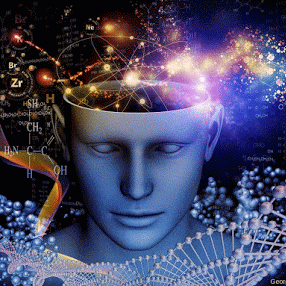
MIND BRAIN
Video
Length 1:00:13| Feb 01 2017
Professor of Cognitive and Computational Neuroscience Anil Seth looks at the neuroscience of consciousness and how our biology gives rise to the unique experience of being you.
Watch the Q&A here: https://youtu.be/n-n1ClDhVdA
ARTICLES & ESSAYS
Scientific American
..the screen of perception is much more akin to a dashboard than a window into the environment. It conveys relevant information about the environment in an indirect, encoded manner that helps us survive. The forms and colors we see, the sounds we hear, the flavors we taste are all like dials: they present to us, at a glance, information that correlates—in a manner fundamentally beyond our ability to cognize—with the mental states of the environment out there..
By Kevin Berger July 9, 2015
How does a physicist, neurobiologist typically explain color?
by Kevin Berger
Nick Chater argues our brain is a storyteller, not a reporter from an inner world.
David McNew for Quanta Magazine
The cognitive scientist Donald Hoffman uses evolutionary game theory to show that our perceptions of an independent reality must be illusions.
The scientist joins The Ezra Klein Show to discuss what he learned from bringing the Dalai Lama to his lab.
The Atlantic |Matthieu Ricard and Wolf Singer
A scientist and a monk compare notes on meditation, therapy, and their effects on the brain.
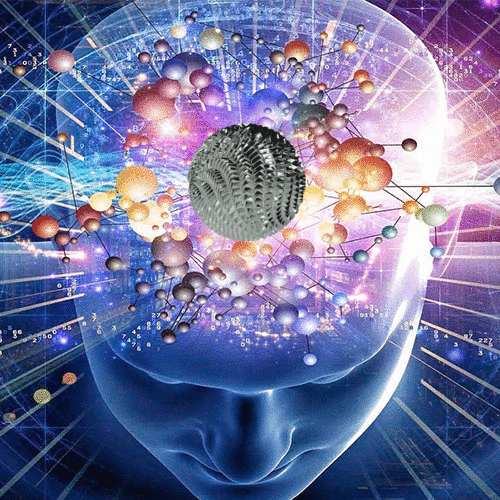
BRAIN TECH
ARTICLES & ESSAYS
25th January 2019
Dirk De Ridder (Belgian neurosurgeon)
In order for neuromodulation to become smart, it needs to embed AI in its design, which controls both the sensing and execution of the neuromodulation device. In essence, the device needs a little brain to control itself, in order to become flexible and adaptive, in order to learn from the past to predict how it should behave in the future in a similar context depending on a specific goal. This tends to frighten many people, who fear computers will take over control from humans, once AI supersedes human intelligence, in a moment coined the singularity, predicted to occur around 2045.
by Lone Frank
When doctors can directly access patients’ cerebral reward networks, someone has to decide just how good people should feel.
It is a good question, but I was a little surprised to see it as the title of a research paper in a medical journal: “How Happy Is Too Happy?”
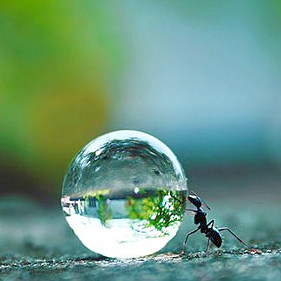
BEHAVIOUR
Video
Wikipedia excerpt
John Bumpass Calhoun (May 11, 1917 – September 7, 1995) was an American ethologist and behavioral researcher noted for his studies of population density and its effects on behavior. He claimed that the bleak effects of overpopulation on rodents were a grim model for the future of the human race. During his studies, Calhoun coined the term “behavioral sink” to describe aberrant behaviors in overcrowded population density situations and “beautiful ones” to describe passive individuals who withdrew from all social interaction. His work gained world recognition. He spoke at conferences around the world and his opinion was sought by groups as diverse as NASA and the District of Columbia’s Panel on overcrowding in local jails. Calhoun’s rat studies were used as a basis in the development of Edward T. Hall‘s 1966 proxemics theories. 26 July 2022
How can we all innovate like Faraday?
What was Faraday’s innovative process? And how can we learn to innovate from Faraday’s work?
In true Ri tradition, this talk will illustrate Faraday’s innovation process through multiple demonstrations, including those done by Faraday himself, alongside new ones that reveal the inner workings of Faraday’s innovative process.
ARTICLES & ESSAYS
OffGuardian | Kit Knightly
If you’ve ever wondered why, you’ve come to the right place.
Any casual reader of the alternate media landscape will eventually come up with a reference to Stanley Milgram, or Philip Zimbardo, the “Asch Experiment” or maybe all three.
“Cognitive Dissonance”, “Diffusion of Responsibility”, and “learned helplessness” are phrases that regularly do the rounds, but where do they come from and what they mean?
Well, here are the important psycho-social experiments that teach us about the way people think, but more than that they actually explain how our modern world works, and just how we got into this mess.
from Science Alert
nverse | Sarah Sloat
Alessandretti says their findings are in line with previous research in the 1990s by evolutionary anthropologist Robin Dunbar. He proposed that the maximum number of relationships humans can maintain is 150 people, arguing that this constraint stems from the limits of human cognition.
February 3, 2017
If the sound of a co-worker repeatedly clicking his pen can send you into a flaming furor, take heart: You’re not being hypersensitive, and you’re not alone. Neurologists in the UK have spotted physical differences in the brains of people with this sound-related rage…
The technical term for that noise-triggered irritation and rage is misophonia (“hatred of sound”). People who have it experience uncontrollable and intense negative emotions after hearing certain repetitive noises like chewing, lip-smacking, pen-clicking, and foot-tapping.
from VOX
By Robert Pearl
…we found dozens of studies confirming that doctors, the people we trust to keep us safe from disease, fail to wash their hands one out of every three times they enter a hospital room, a mistake that kills thousands of patients each year.
We tell ourselves we’d never do anything like that.
But science tells us that we would, far more often than we d like to believe.
Under the right circumstances, a subconscious neurobiological sequence in our brains causes us to perceive the world around us in ways that contradict objective reality, distorting what we see and hear.
This powerful shift in perception is unrelated to our intelligence, morals, or past behaviours. In fact, we don t even know it s happening, nor can we control it.
By Robert Sapolsky
There’s a method to the madness of the teenage brain.

EMOTION
ARTICLES & ESSAYS
Inverse: Sarah Sloat
Sep 2018
In a groundbreaking study released Thursday, researchers describe how octopuses on the drug act similarly to a socially anxious human on MDMA: They open up.
Gül Dölen, Ph.D., is an assistant professor of neuroscience at Johns Hopkins University and the co-author of the new Current Biology paper. She tells Inverse that when octopuses are on MDMA, it’s like watching “an eight-armed hug.”
January 2, 2019
“So long as an opinion is strongly rooted in the feelings, it gains rather than loses in stability by having a preponderating weight of argument against it.”
John Stuart Mill – 1869
In the last few years, evidence has been emerging that several psychedelics seem to alleviate the symptoms of depression.
As with many other psychedelics, this one comes from nature, too. Specifically, we’re talking 5-methoxy-N,N-dimethyltryptamine (5-MeO-DMT), secreted by the Colorado River toad (Incilius alvarius).
Among a small group of people, researchers led by Maastricht University in the Netherlands found that inhaling dried-and-powdered toad secretions resulted in increased life satisfaction, better mindfulness, and a decrease in psychopathological symptoms for the duration of the four-week-long study.
Alex Honnold doesn’t experience fear like the rest of us.
Overcoming procrastination isn’t so much about completing tasks. In reality, it’s about something much more personal.
New research suggests that over thousands of years of dog domestication, people preferred pups that could pull off that appealing, sad look. And that encouraged the development of the facial muscle that creates it.
“The implications are quite profound,” said Brian Hare from Duke University…
By Mark Manson
There’s what feels right and then there’s what is right, and they aren’t always the same.
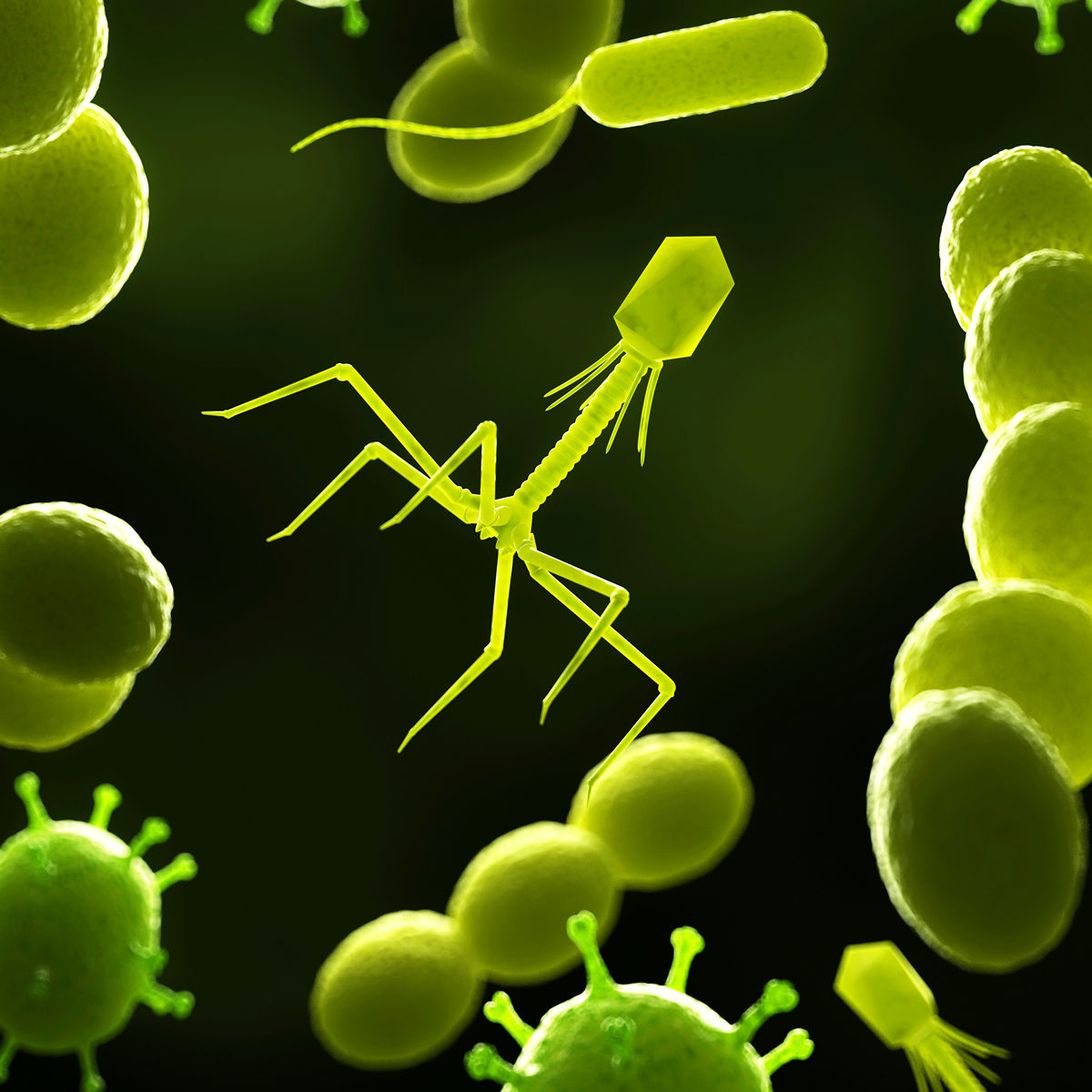
MICROBES
Video
Length 13:11 | Nov 2022
ARTICLES & ESSAYS
Research published today in Nature Microbiology has identified 54,118 species of virus living in the human gut — 92% of which were previously unknown.
…Remarkably (but perhaps predictably), more than 90% of these viral species are new to science. They collectively encode more than 450,000 distinct proteins — a huge reservoir of functional potential that may either be beneficial or detrimental to their microbial, and in turn human, hosts.
Ricardo Bessa for Quanta Magazine
Viruses and other parasites may sync with their host’s biological clock — or reset it — to gain an advantage.
A controversial disease revives the debate about the immune system and mental illness.
Ricardo Bessa for Quanta Magazine
Viruses and other parasites may sync with their host’s biological clock — or reset it — to gain an advantage.
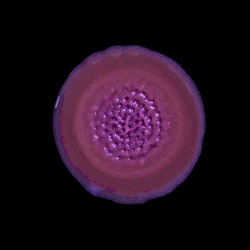
Biology
Video
This short video is excerpted from the Aug 2019 article: Scorpion Toxin That Targets ‘Wasabi Receptor’ May Help Solve Mystery of Chronic Pain
Length 1:55 | Mar 2017
David Julius uses natural products, such as chili peppers and wasabi to research pain and somatosensation – the process whereby we experience touch and temperature. Here he speaks about his research identifying molecules that detect noxious (pain-producing) stimuli.
ARTICLES & ESSAYS
Mathematicians and neuroscientists have created the first anatomically accurate model that explains how vision is possible.
Jennifer Chu | MIT News Office
March 23, 2020
The behavior of these swirling waves, the researchers realized, is similar to the waves generated in other, seemingly unrelated systems, such as the vortices in quantum fluids, the circulations in the atmosphere and oceans, and the electrical signals that propagate through the heart and brain.
Jason Alvarez | August 22, 2019
Researchers at UC San Francisco and the University of Queensland have discovered a scorpion toxin that targets the “wasabi receptor,” a chemical-sensing protein found in nerve cells that’s responsible for the sinus-jolting sting of wasabi and the flood of tears associated with chopping onions. Because the toxin triggers a pain response through a previously unknown mechanism, scientists think it can be used as a tool for studying chronic pain and inflammation, and may eventually lead to the development of new kinds of non-opioid pain relievers.
The scientists isolated the toxin, a short protein (or peptide) that they dubbed the “wasabi receptor toxin” (WaTx)…
…WaTx forces its way into the cell, circumventing the standard routes that place strict limits on what’s allowed in and out. Most compounds, from tiny ions to large molecules, are either ingested by the cell through a complex process known as “endocytosis,” or they gain entry by passing through one of the many protein channels that stud the cell’s surface and act as gatekeepers.
But WaTx contains an unusual sequence of amino acids that allows it to simply penetrate the cell’s membrane and pass right through to the cell’s interior. Few other proteins are capable of the same feat. The most famous example is an HIV protein called Tat, but surprisingly, WaTx contains no sequences similar to those found in Tat or in any other protein that can pass through the cell’s membrane.
“It was surprising to find a toxin that can pass directly through membranes. This is unusual for peptide toxins,” Lin King said. “But it’s also exciting because if you understand how these peptides get across the membrane, you might be able to use them to carry things – drugs, for example – into the cell that can’t normally get across membranes.”

Physics
ARTICLES & ESSAYS
What is our Universe made out of? At a fundamental level, to the best of our knowledge, the answer is simple: particles and fields.


